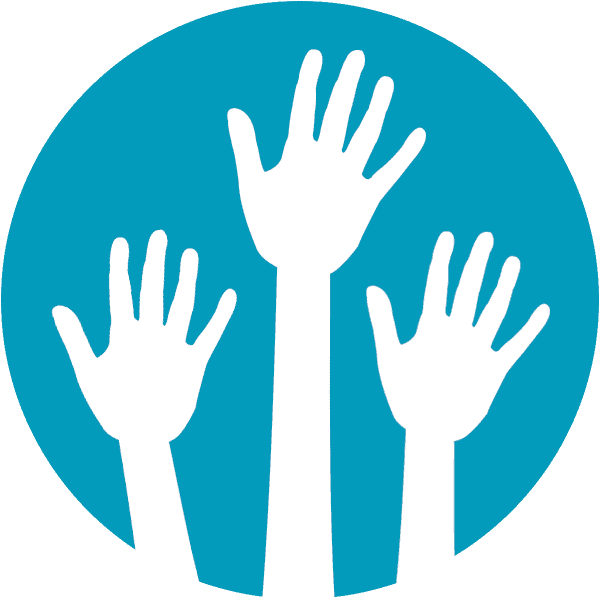Frequently Asked Questions
Dystonia is a Movement Disorder
At this time, there is not a single test to confirm or rule out a dystonia diagnosis. Instead, the diagnosis depends on a physician’s ability to observe symptoms and obtain a patient history. Medical tests may be ordered to try to identify the cause for the development of dystonia, but a cause is often not found.
The dystonia diagnostic process may include:
- Patient history
- Family history
- Physical examination to assess functioning of the brain and nervous system
- Laboratory studies such as blood and urine tests, and analysis of cerebrospinal fluid
- Electrical recording techniques, such as electromyography (EMG) or electroencephalography (EEG)
- Genetic testing for inherited forms of dystonia
- Additional tests and screenings to uncover other possible causes for the dystonia
A movement disorder specialist is a neurologist with qualifications specifically in the diagnosis and treatment of movement disorders such as dystonia.
Dystonia generally develops gradually. Exceptions include rapid-onset dystonia-parkinsonism (which may develop over days or hours) and the acute dystonic reactions associated with certain antipsychotic drugs.
Symptoms of dystonia may begin very mildly. Subtle facial or jaw spasms, or difficulty chewing may suggest early face or jaw dystonia. Changes in the cadence or pitch of speech may be early signs of laryngeal dystonia/spasmodic dysphonia. Mild jerky head movements, stiff neck, or local neck discomfort may occur in the early stages of cervical dystonia. Cramping or fatiguing of the hands during writing, other manual activities, or walking may suggest limb dystonia. Similarly, children who develop generalized dystonia may first complain of cramps in a leg or a foot turning in. Sometimes a focal dystonia may arise directly following injury to that body region.
Sensory symptoms may precede focal dystonia in some people. Common examples would be a gritty sensation in the eye preceding blepharospasm and irritation of the throat preceding laryngeal dystonia/spasmodic dysphonia.
Dystonia affects muscles that can be controlled voluntarily mostly the skeletal muscles. Dystonia does not affect smooth muscles, such as the heart. However, dystonia can affect breathing in several ways. Severe neck dystonia can cause difficulty breathing when the upper airway is impacted. Dystonia involving the vocal cords can potentially cause shortness of breath when the vocal cords close tight, but in general the tightness is present primarily when speaking. The act of breathing involves muscles between the ribs and a large muscle called the diaphragm. Dystonia can cause stiffness in the muscles between the ribs and can cause a sensation or shortness of breath. Occasionally, the diaphragm can also be affected. Finally, when a person with dystonia has involvement of the spine, twisting of the torso can limit how much the lungs can expand when breathing, and this can potentially cause shortness of breath.
The bladder is made up of smooth muscle, and therefore not affected by dystonia. However, the muscles around the opening of the bladder (the external sphincter) can very rarely become involved, resulting in difficulty of passing urine. This seems to occur most often dystonia that is a symptom of another neurological disease such as Parkinson’s disease.
In the overwhelming majority of people with dystonia, it does not shorten life expectancy or result in death. In very severe generalized dystonia that affects many body areas, there can be problems that arise secondary to the dystonia that may cause life-threatening conditions. However, these instances are quite rare and usually treatable. Dystonia does occur as a symptom of many degenerative disease, some of which do impact mortality, but the dystonia itself does not shorten life span.
Rarely, patients with dystonic symptoms develop increasingly frequent and intense episodes of severe generalized dystonia called status dystonicus. A single episode of this severe dystonia may be referred to as a dystonic storm or dystonic attack.
Although the exact numbers are not known, anecdotal accounts suggest that relatively mild to moderate dystonic storms are a fairly regular experience for some individuals with generalized dystonia, especially secondary dystonias. Most cases of severe status dystonicus occur in persons who have generalized dystonia that is complicated by other conditions such as metabolic disease, secondary effects of a traumatic injury, or additional neurological conditions.
If a person s swallowing or breathing is affected by a dystonic storm, he/she may require emergency medical attention. In very severe cases, individuals may be admitted to an intensive care unit setting where they may be sedated with medication or need temporary mechanical ventilation to support breathing.
Although the exact origins of status dystonicus are not known, some documented cases appear to be triggered by an abrupt change in medication or severe infections. Medications and botulinum neurotoxin may be used to reduce or alleviate symptoms of a severe dystonic storm. Individuals experiencing a relatively mild or moderate dystonic storm may have a specific medication prescribed by a physician to take at the onset of the attack, may get some relief from a sensory trick, or may simply wait for the symptoms to subside.
Tremor is frequently, but not always, seen with dystonia. Differentiating between the two can be difficult in some individuals with dystonia. Tremor is an involuntary, rhythmic muscle contraction leading to shaking movements in one or more parts of the body, and dystonia is characterized by excessive muscle contractions causing abnormal, often repetitive, muscle movements and/or postures. Dystonic movements can be patterned and twisting and may resemble tremor. Individuals with cervical dystonia may have a head or hand tremor. Individuals with focal hand dystonia may have an associated writing tremor of the hand. Researchers continue to examine the relationship between tremor and dystonia.
The constant movement and muscle contractions of dystonia can be compared to working out virtually all day and for people whose symptoms don’t stop during sleep, 24 hours a day. This can definitely result in fatigue and diminished stamina. Fatigue may be confused with lack of energy or motivation which may be a sign of depression or other medical conditions. Adequate rest and supplementing sleep with restorative practices such as meditation or relaxation techniques are a mainstay of coping with fatigue for many people.
Remission happens only rarely, as it usually temporary. It was once believed that 10% of people with dystonia might have such a spontaneous remission. It is probably much less than that. More frequently, instead of a true remission, the severity of dystonic postures may be reduced for months or years in a small minority of patients. Nearly everyone has some degree of day-to-day fluctuation in the severity of his or her symptoms For a few, the fluctuation may be so much better and for such a long time that it seems like a remission. However, a careful exam will still reveal some involuntary postures. Those who do seem to have a true remission are likely to again have symptomatic dystonia sometime later.
Dystonia does not have a primary effect on bones, but because of the abnormal postures that result from dystonic spasms, unusual mechanical stress may be placed on bones. For instance, if someone has a severe dystonia that involves a very sustained posture in one position, he/she may get a shortening of the ligaments and tendons so that the joint becomes “contracted” and can no longer move freely through a full range of motion. With time, this might be expected to cause excessive wear on the affected bones. Even short of a contracture, some bones may experience excessive wear because of such abnormal mechanical stresses. Bone changes, however, are not usually symptomatically important to people with dystonia. It is more often the case that we are concerned about dystonia’s effect on muscles and related supportive tissues as they influence posture.
There have been very few studies on the effects of dystonia medications and botulinum neurotoxin injections in pregnant women, so to err on the side of caution, it is generally recommended that women who are pregnant cease drug treatment. In some cases a woman may (gradually) stop taking oral drugs completely, in other cases the dose is reduced. Treatment for dystonia during pregnancy is very individual and each woman’s situation is unique. There is no single recommendation for all women patients, and women should discuss their situation with an experienced movement disorder specialist.
People with dystonia should exercise extreme caution in considering traditional chiropractic care to address their dystonia symptoms. Because of the nature of chiropractic adjustments and the nature of dystonia, there is some clear potential for harm. Gentle massage may help temporarily alleviate muscle tension, but before seeking treatment from a chiropractor or massage therapist (or any complementary therapy practitioner) you must be completely confident that the practitioner fully understands dystonia and the implications of your individual symptoms. This may involve providing materials to the practitioner, sharing the DMRF’s web address, or inviting the practitioner to contact your movement disorder specialist.
Although published information is limited, anecdotal accounts suggest that acupuncture may help relieve pain in people with dystonia. The benefits of acupuncture are usually cumulative and require more than one visit to the practitioner before becoming apparent. Acupuncture can be used in conjunction with traditional medications without negative interactions.
If you are interested in finding an acupuncture practitioner, learn as much as you can about the practice. Laws vary from state to state so check into your local required credentials for people who practice acupuncture. A practitioner who is not a traditional physician should have a diploma from the National Commission for the Certification of Acupuncturists. You can also contact the American Academy of Medical Acupuncture (AAMA) for a list of certified acupuncturists in your state.
Hypnosis does not address dystonia directly, but regular relaxation techniques such as self-hypnosis can improve well being and quality of life.
There is no known correlation between dystonia and diet. Generally speaking, individuals with dystonia should have a nutritious diet sufficient in calories, considering the amount of muscle activity experienced throughout the day. Stimulants such as nicotine and caffeine may make symptoms worse. Alcohol may make symptoms temporarily better (or worse) in some cases. Nutritional supplements and vitamins have not generally been shown to cause dramatic improvement in movement disorders. Substances that make a person more relaxed, calm, or sleepy may non-specifically improve symptoms. It is important for individuals to discuss any vitamins and supplements taken with their movement disorders specialist to guard against potential interactions or safety concerns. Certain foods can interfere with the absorption of specific medications.
Temporomandibular joint (TMJ) disease is an arthritic condition, not a dystonia. Oromandibular dystonia may be misdiagnosed as TMJ.



